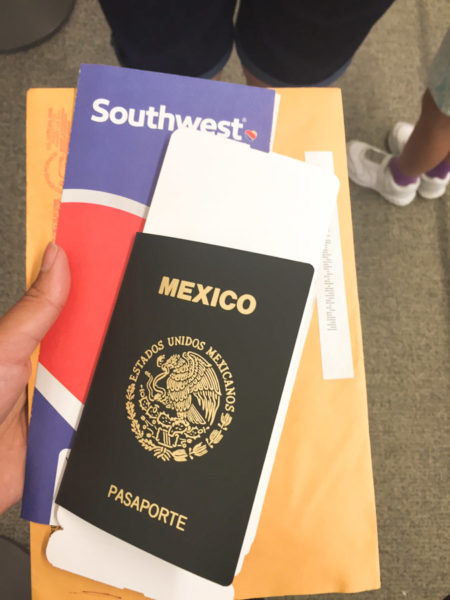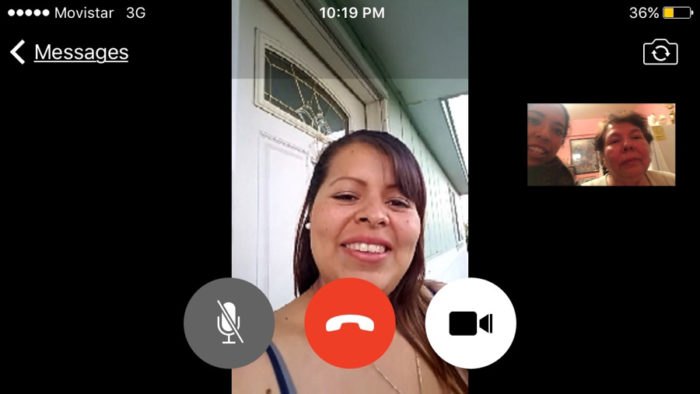
“Welcome home!” the immigration officer at Sea-Tac says cheerfully.
The words sound strange. He’s dressed in the same uniform that for many years I was taught to fear, but here he is welcoming me back to the U.S., knowing that I am not a citizen.
He smiles and says it so genuinely, but for me the words ring differently.
You see, I am one of 11 million undocumented immigrants in the United States. Brought over when as a baby, I grew up completely in the states. I went to school here, ran on the cross country team, and was even the homecoming queen.
But because my mother brought us without proper documentation, we are classified as undocumented immigrants.
With the executive order passed under the Obama administration in 2012, many young adults like me are now “DACAmented,” that is, we are protected by USCIS’ Deferred Action for Childhood Arrivals program. I currently have work authorization and a driver’s license here in the state of Washington. I still cannot vote but I do pay taxes (as I did before DACA, as did my mixed-status family their entire life).
A few months ago, I first heard about a special study abroad program for DREAMers. Based out of California State University-Long Beach through the California-Mexico Studies Center, the program used a legal process called “advanced parole” to allow us to leave and re-enter the country legally.
Now, advance parole is a tricky business. It’s $360 just to apply, and requests must be made a few months in advance. You are only allowed to travel under one of the three circumstances: a serious illness or death in the family, business overseas, or for education. Even under those circumstances, the language of the paperwork specifically states: “This document does not guarantee that a person will be paroled into the United States. CBP (Customs and Border Patrol) has discretion to deny a request for parole.”

Despite an ominous message that warns us away, I applied and was granted permission to finally travel to my other home in Mexico.
I went there for three weeks with 37 other DACAmented students to learn about the political, social, and economic history of my native country and to reconnect with my family that’s still there.
We traveled to historic sites like the Pyramids of Teotihuacan and to the Palace of Hernan Cortez. We were also in immersive language classes with CETLALIC, a Spanish Language school in Cuernavaca, Morelos.
As a first timer, I was stunned by the sheer size of Mexico City (you think NYC is big… this place is literally 300 years older with double the population), thrilled by the normalcy around protesting (during my time there, teachers were camped out in the local park protesting the national education reform), and even surprised at how dog friendly the city was!
But the most memorable time on the trip was the week we returned to our families.
Meeting my family for the first time was surreal. There are not words to explain the feeling of reconnecting with that which you’ve always known, but have never seen, let alone touched.
Though many of us in the U.S. have talked to our relatives over the phone or exchanged photos via social media, it was the first time we got to share a meal together or actually hug our own families, our own aunts, cousins, and even parents.
For me, I was able to see the resting place of my grandparents in Zacatecolotla, Guerrero. My abuelo died almost two years ago, and because of our status at the time my mother and I were not able to attend the funeral. For me, that meant never being able to physically meet my grandfather; for my mom, that meant 22 years of being apart with no way to say goodbye before he passed.
Similarly on my father’s side, he was finally able to ‘see’ his mother over FaceTime for the first time in nearly 30 years after leaving Mexico. While most of my family members either had landlines or cellphones, few had steady access to the internet let alone a device that allows for video chatting. Thanks to advances in technology, these kind of heartfelt reunions are modern day miracles. As DREAMers we have the access to bring those generations together again.
But don’t let that fool you; these virtual family reunions wouldn’t be necessary if it weren’t for our slow and complicated immigration system. Each time I met another family member, a bittersweet aftertaste lingered as I questioned when we would have such a breathtaking opportunity to be together again.

Though I am incredibly grateful for the chance to reconnect with my family, I recognize that this opportunity is not accessible to most people in my situation. Travel is expensive, time consuming, and frankly a little scary. Coming back through that airport, my heart was pounding as I confronted the gamble I’d taken in leaving the US.
This should not be our only choice.
We need options that are accessible, for ourselves and for our families who are still without status and vulnerable to deportation. While Obama has made moves to phase out private prisons, right in our backyard the privately-run Northwest Detention Center in Tacoma is the largest detention center on the West Coast. It casts a shadow over families like mine that live in fear of deportation.
The clash between our hopes for the future and our current reality creates a dissonance.
As a Mexican-born American, it’s difficult to be from two countries that both have such blatant flaws. In one world, we are vilified and dehumanized as “illegal aliens,” with a presidential frontrunner barely veiling his racism and xenophobia. In the other, local economies are struggling, and our families have been robbed of opportunity in the place they call home.
The U.S. and Mexico’s fates are inevitably intertwined historically and economically. But they’re also inextricably linked by people like me.
My hope is that as undocumented individuals, we can use our unique experiences to unravel the interrelated problems of our two nations. As children of two worlds, I believe we especially hold the keys to addressing transnational issues, using our own identities as blueprints.

